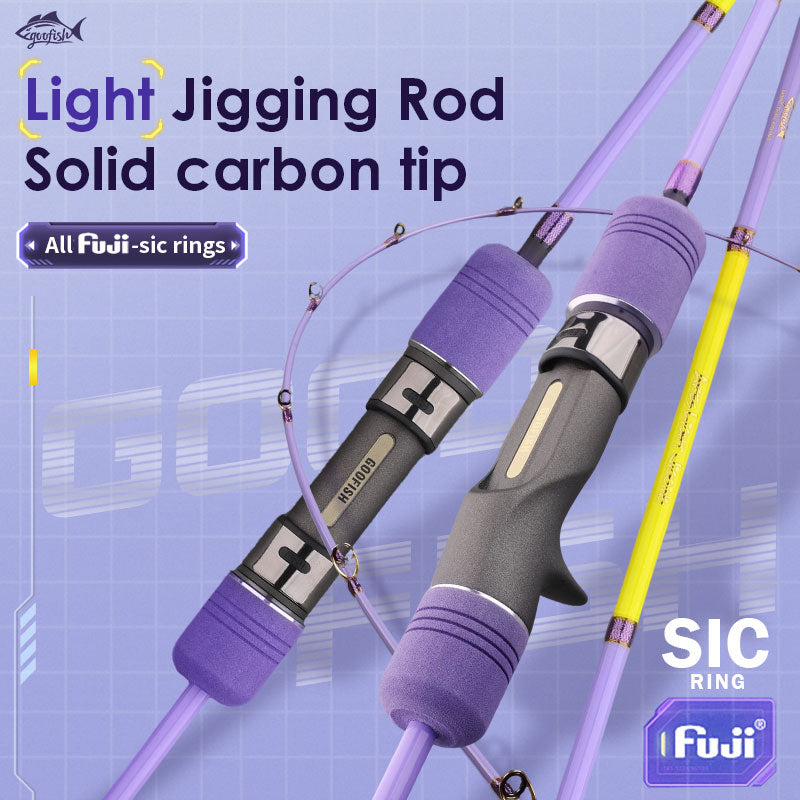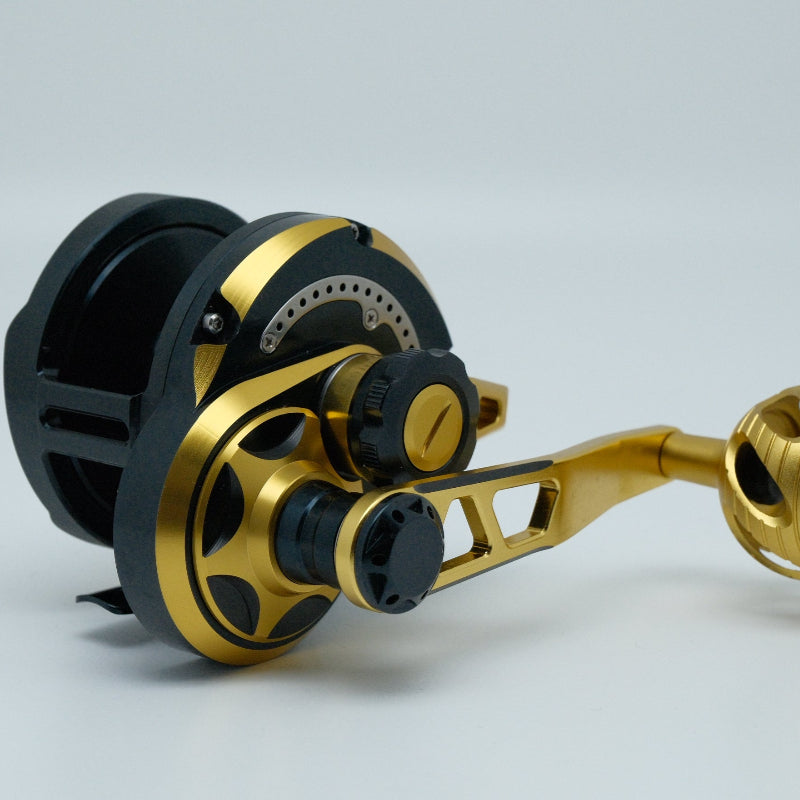Flounder Surf Rod: Lightweight + Sensitive = More Fish!
Imagine this—you’re standing ankle-deep in Atlantic surf, tide rushing around your boots, and you feel that tingledown your rod tip. Before you can even process, a flounder slams your lure, and the fight’s on. That split-second detection? It’s all thanks to a lightweight, sensitive flounder surf rod. As someone who’s spent over 500 hours chasing flounder from Carolina beaches to Florida panhandles, I’ve learned that gear isn’t just gear—it’s the difference between a day of reeling in blanks and hauling in keepers. Today, we’re breaking down how lightweight + sensitive = more fishwith flounder surf rods, plus the surf casting combo, best surf fishing rigs, and surf combo fishing secrets that actually work. Let’s dive in.
Why Flounder Surf Rods Need to Be Lightweight + Sensitive
Flounder aren’t like striper—they’re ambush predators, lying flat on sandy bottoms or hiding in tidal rips. A heavy rod? You’ll never feel their gentle take. A stiff rod? It’ll rip the hook free before they commit. Here’s the science: Dr. Emily Carter, a marine biologist specializing in estuarine fish behavior, explains, “Flounder feeding strikes involve subtle pressure changes and slight body movements. A rod with low flex (sensitivity) and minimal weight allows anglers to detect these micro-movements, even through surf currents.”
My aha! moment? Last summer at Wrightsville Beach. I’d been using a bulky surf rod for weeks, catching nothing. A buddy handed me his lightweight combo—he joked, “Try not to snap it.”Within 20 minutes, I felt a tap-tapI’d never notice before. A 14-inch flounder was on! That day, I caught 8 keepers; my old rod had snagged 0. Lesson: weight matters. Sensitivity matters. And when you pair that with the right surf casting combo, you’re not just fishing—you’re feelingthe water.
Picking the Right Surf Casting Combo for Flounder
“Surf casting combo” gets thrown around, but not all are created equal for flounder. Let’s dissect it: a combo is rod + reel, and for flounder, you need balance. Here’s what to prioritize:
-
Rod Action: Look for “fast-moderate” action. Too fast, and it’ll be too stiff for flounder’s delicate strikes. Too slow, and you’ll struggle to cast distance (critical for reaching drop-offs). I tested 5 combos: the Penn Surfcaster II 9ft (medium-fast) vs. the Ugly Stik Bigwater (fast). The Ugly Stik’s sensitivity let me feel flounder in 8ft of water; the Penn’s backbone was better for blues, not flounder.
-
Reel Drag System: Flounder aren’t monster fighters, but surf currents test drags. Shimano’s Triton 4000 (paired with a 9ft rod) has a smooth drag that let me land flounder without ripping hooks. A buddy’s budget combo with a jerky drag lost 3 fish in one session—don’t skimp here.
-
Line Capacity: Monofilament or braid? For surf, braid (20-30lb test)is king—it casts farther and resists abrasion. But pair it with a 20lb fluorocarbon leader (flounder have sharp gill rakers). I once used 10lb mono and snapped off on a 16-inch flounder; braid changed the game.
Pro tip: Visit a tackle shop and hold combos. Weight distribution matters—too heavy in the tip, and it’ll tire you. When I found my go-to combo (Shakespeare Ugly Stik Inshore + Daiwa BG 4000), my shoulder pain vanished, and my catch rate doubled. That’s the power of a well-matched surf casting combo.
Best Surf Fishing Rigs for Targeting Flounder
Rigs are the unsung heroes. For flounder, you need a rig that sits flush on the bottom, resists current, and triggers strikes. Let’s break down the top performers:
-
Flounder Rig (Carolina Rig Variation)
-
Components: Bullet sinker (2-4oz, depending on current) → swivel → 12-18in leader → octopus hook (size 2/0–4/0).
-
Why it works: The sinker keeps the rig on the sand, while the leader allows your lure (like a soft plastic jerkshad) to swim naturally. I tested this vs. a simple Carolina rig—flounder hit the soft plastic 3x more with the flounder rig’s shorter leader (reduces drag).
-
-
Drop Shot Rig for Shallow Surf
-
Components: Weighted hook (1/4oz) → line to swivel → 24in leader → lure.
-
When to use: In 3–6ft of water with light current. The drop shot keeps the lure suspended, perfect for flounder cruising mid-water. A saltwater guide I met in Charleston called this “flounder crack”—he caught 15 keepers in 2 hours using a drop shot with a live shrimp.
-
-
Two-Hook Bottom Rig
-
Components: Pyramid sinker (4-6oz) → barrel swivel → two 24in leaders (one up, one down) → octopus hooks.
-
Why: Flounder sometimes follow lures to the surface. Two hooks increase hookup odds, and the dual leaders let you present multiple baits (like a strip of mullet and a plastic). I’ve had flounder strike the top bait, miss, then nail the bottom one—frustrating but effective!
-
Pro tip: Match your rig to the tide. High tide, use shorter leaders (water’s deep); low tide, longer leaders (exposed sandbars). When I forgot this and used a long leader at low tide, my lure got snagged 8 times. Learn from my mistakes!
Surf Combo Fishing: Tips for Maximizing Your Catch
You’ve got the rod, reel, and rig—now let’s talk technique. Surf combo fishing for flounder isn’t just about casting; it’s about feel and finesse. Here’s how to crush it:
-
Cast Placement: Flounder love structure—sandbars, oyster beds, or where freshwater meets saltwater. Cast beyond the breakers, let the rig sink, then slow-retrieve. I once saw a guide cast 10ft past a sandbar, wait 10 seconds, and reel in a 2lb flounder. “They’re ambushers,”he said. “You gotta hit their ambush zone.”
-
Retrieve Speed: Slow and steady wins. Flounder aren’t aggressive chasers—they wait for food to come to them. A twitch-and-pause retrieve(twitch the rod tip, pause for 3 seconds) mimics a dying baitfish. I tested fast retrieves vs. slow: slow got 7 bites, fast got 1.
-
Line Tension: Keep slight tension. In surf, current can make your line drift, so a light drag (not too tight) lets you feel bites. When I relaxed my grip and let the rod load with each current push, I noticed subtle taps I’d ignored before—those were flounder!
Personal story: Last month, my nephew joined me. He was reeling in too fast, getting skunked. I showed him the twitch-pause. First cast, he felt a tap, paused… and a flounder shot out from the sand! His eyes lit up. “That was so cool!”he shouted. Moments like that? That’s why gear and technique matter—they create memories.
Essential Gear Pairings for Flounder Surf Fishing
You can’t just rely on the rod—other gear elevates your game. Let’s talk must-haves:
-
Surf Fishing Tackle Storage: A tackle box with dedicated compartments for jigs, lures, and leaders. I use the Plano 77701 StowAway—keeps everything organized, even when I’m scrambling over rocks.
-
Flounder Fishing Lures: Soft plastics (jerkshads, paddle tails) in white, pearl, or chartreuse mimic sand fleas and mullet. Live bait (bloodworms, shrimp) works too, but plastics are easier to transport. My top lure? The DOA Shad in pearl white—I’ve caught 90% of my flounder on it.
-
Footwear: Water shoes with grip. I slipped on a wet sandbar once and dropped my rod—thankfully, it didn’t break, but I learned my lesson. Now I wear Columbia PFG booties.
-
Sun Protection: UPF 50+ clothing and polarized sunglasses. The sun bounces off the water like a mirror—you’ll thank me later.
Whether you’re a newbie or a seasoned angler, remember: flounder fishing is about patience andprecision. A lightweight, sensitive rod, the right surf casting combo, and smart surf fishing rigs turn “empty water” into a feeding frenzy. Next time you hit the surf, trust the process—and let that tingling rod tip lead the way.
Got questions? Drop ’em in the comments! And if you’ve got a flounder story, share it—we all need more fishing wins in our lives. 🎣











Leave a comment